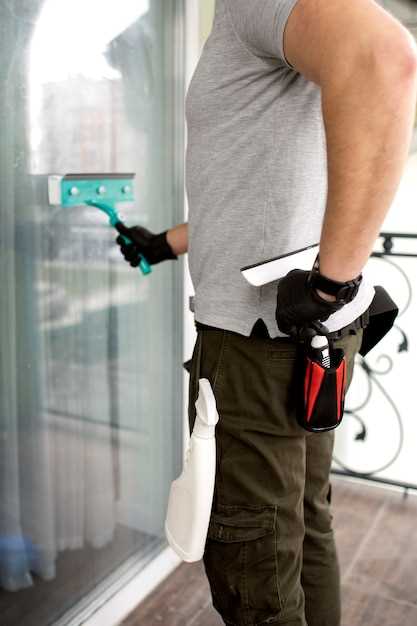

Accidents happen when we least expect them, and sometimes they involve the delicate and transparent material that surrounds us in our daily lives. Whether it’s a shattered window, a cracked glass door, or a broken mirror, the sudden damage can be both alarming and inconvenient. In these unforeseen moments, it’s crucial to know the necessary steps to take to address the situation promptly and efficiently.
When faced with a glass mishap, it’s essential to remain calm and assess the extent of the damage. While it may be tempting to panic or attempt a quick fix, it’s crucial to prioritize safety and take the appropriate measures to prevent further harm. By understanding the proper procedures and seeking professional assistance, you can ensure a swift resolution and minimize any potential risks.
One of the first actions to consider is securing the area affected by the accident. This can be done by cordoning off the damaged section or, if necessary, relocating individuals to a safer location. By preventing access to the broken glass, you can reduce the chances of injuries and additional damage. It’s also advisable to warn others about the situation, using clear signs or verbal communication, to ensure everyone’s safety.
Once the immediate safety concerns have been addressed, it’s time to reach out to experts in glass repair and replacement. Seeking professional assistance is crucial to ensure a thorough assessment of the damage and the implementation of appropriate solutions. By relying on experienced professionals, you can rest assured that the necessary repairs will be carried out efficiently, restoring the integrity and functionality of the affected glass surfaces.
Assess the Damage and Ensure Safety
When an unexpected incident occurs that affects the integrity of your glass structure, it is crucial to promptly assess the extent of the damage and prioritize safety measures. By carefully evaluating the situation and taking necessary precautions, you can minimize potential risks and ensure the well-being of everyone involved.
Evaluate the Severity of the Damage
Begin by examining the affected area to determine the severity of the damage. Look for any cracks, fractures, or shattered glass, and assess whether the damage is limited to a specific section or if it has spread across the entire surface. Understanding the extent of the damage will help you make informed decisions regarding the necessary repairs and safety measures.
Implement Safety Measures
Once you have assessed the damage, it is essential to implement safety measures to prevent any further harm. Start by cordoning off the affected area to restrict access and minimize the risk of accidents. Use caution signs or barriers to alert others to the potential danger. If there are any sharp or protruding glass fragments, carefully remove them or cover them with protective materials to prevent injuries.
| Key Steps to Ensure Safety: |
|---|
| 1. Assess the damage and evaluate its severity. |
| 2. Cordon off the affected area to restrict access. |
| 3. Use caution signs or barriers to alert others. |
| 4. Remove or cover sharp glass fragments. |
Remember, safety should always be the top priority when dealing with damaged glass. By promptly assessing the damage and implementing appropriate safety measures, you can minimize the risks associated with accidents and ensure the well-being of everyone involved.
Contact Emergency Glass Repair Service
When unexpected incidents happen and your windows or glass doors are damaged, it is crucial to reach out to professionals who specialize in providing immediate assistance. In such situations, contacting an emergency glass repair service is the most prudent course of action to ensure the safety and security of your property.
During these unforeseen events, it is essential to have the contact information of a reliable emergency glass repair service readily available. By doing so, you can swiftly connect with experts who possess the necessary skills and expertise to handle any glass-related emergencies.
When reaching out to an emergency glass repair service, it is important to provide them with accurate details regarding the incident. This includes describing the type of glass that has been damaged, the extent of the damage, and any specific concerns or requirements you may have. By providing clear and concise information, the professionals will be better equipped to assess the situation and provide appropriate solutions.
Furthermore, it is advisable to inquire about the response time of the emergency glass repair service. Understanding their availability and how quickly they can arrive at your location is crucial in urgent situations. Prompt response times ensure that the damaged glass is addressed swiftly, minimizing any potential risks or further damage.
When contacting an emergency glass repair service, it is also important to inquire about their qualifications and certifications. Ensuring that the professionals are properly trained and certified guarantees that they possess the necessary knowledge and skills to handle the repair or replacement of your damaged glass effectively and safely.
In conclusion, when accidents occur and glass damage becomes a concern, contacting an emergency glass repair service is essential. By having their contact information readily available, providing accurate details about the incident, inquiring about response times, and ensuring the professionals are qualified, you can have peace of mind knowing that your glass-related emergency will be handled efficiently and effectively.
Provide Detailed Information about the Incident
When unexpected mishaps occur involving the integrity of glass structures, it is crucial to provide a comprehensive account of the incident. By offering detailed information about what transpired, you enable emergency responders and glass repair professionals to assess the situation accurately and determine the most appropriate course of action.
Start by describing the sequence of events leading up to the incident, highlighting any relevant factors that may have contributed to the damage. Be sure to include the location and time of the incident, as well as any witnesses present. Providing this contextual information helps establish a clear understanding of the circumstances surrounding the accident.
Additionally, it is essential to provide a thorough description of the damage itself. Use precise language to convey the extent and nature of the glass damage, including any visible cracks, fractures, or shattered areas. If possible, provide measurements or estimates of the affected area to assist in the assessment process.
Furthermore, consider including details about any immediate actions taken following the incident. Did you contact emergency services or attempt to secure the area? Documenting these steps demonstrates your proactive approach and can aid in expediting the repair process.
Remember to remain objective and factual when providing information about the incident. Avoid speculation or assumptions, as these can potentially hinder the accuracy of the assessment. Instead, focus on presenting a clear and concise account of the events as they occurred.
By providing detailed information about the incident, you play a crucial role in facilitating the emergency glass repair process. Your accurate and comprehensive account enables professionals to respond effectively, ensuring a swift and efficient resolution to the situation.
Secure the Area and Prevent Further Damage
When unexpected incidents occur that result in damage to glass, it is crucial to take immediate action to secure the area and prevent any additional harm. By implementing proactive measures, you can minimize the risk of further damage and ensure the safety of those in the vicinity.
1. Assess the Situation
Before taking any steps, carefully assess the situation to determine the extent of the damage and potential hazards. Look for any sharp or broken glass fragments that may pose a risk to individuals nearby. Additionally, evaluate the stability of the affected area to prevent any structural collapse.
2. Restrict Access
Once you have assessed the situation, it is essential to restrict access to the damaged area. Use caution tape, barricades, or signage to clearly indicate that the area is off-limits. This will help prevent accidental injuries and ensure that no one inadvertently enters the hazardous zone.
- Place warning signs in visible locations to alert people of the damaged glass and potential dangers.
- Consider using temporary barriers such as cones or fences to physically block access to the area.
- Inform nearby individuals or occupants of the situation and advise them to avoid the affected area until it is properly repaired.
3. Secure Loose Glass

If there are any loose or hanging glass fragments, take immediate action to secure them. This will prevent them from falling and causing injuries or further damage. Use appropriate safety equipment, such as gloves and goggles, when handling broken glass.
- Carefully remove any loose glass fragments and place them in a secure container or bag.
- If there are larger pieces of broken glass that cannot be easily removed, consider using temporary measures such as duct tape or boards to secure them in place.
- Dispose of the broken glass properly, following local regulations and guidelines.
By securing the area and preventing further damage, you can minimize the risks associated with accidents involving broken glass. Remember to prioritize safety and seek professional assistance for prompt and reliable glass repair services.
Prepare Necessary Documents for Insurance Claims
When unexpected incidents occur that result in damage to your property, it is crucial to be prepared and gather all the necessary documents for insurance claims. These documents serve as evidence and support your case when filing a claim with your insurance provider.
1. Incident Report: Start by creating a detailed incident report that includes the date, time, and location of the accident. Describe the events leading up to the incident and provide any relevant information or observations. This report will help establish the cause of the damage and provide a clear timeline of events.
2. Photographs: Take clear and detailed photographs of the damaged area. Capture the extent of the damage from different angles, ensuring that the images are well-lit and focused. These photographs will serve as visual evidence and help the insurance adjuster assess the situation accurately.
3. Repair Estimates: Obtain repair estimates from reputable professionals or companies specializing in glass repairs. These estimates should include a breakdown of the costs involved, such as labor, materials, and any additional charges. Having multiple estimates can provide a better understanding of the overall repair expenses.
4. Proof of Ownership: Gather documents that prove your ownership of the damaged property, such as purchase receipts, invoices, or warranty certificates. These documents establish your right to claim compensation for the damage and ensure a smoother claims process.
5. Insurance Policy: Review your insurance policy to understand the coverage and exclusions related to glass damage. Familiarize yourself with the terms and conditions, deductibles, and any specific requirements for filing a claim. This knowledge will help you navigate the claims process effectively.
6. Witness Statements: If there were any witnesses to the incident, collect their contact information and request written statements regarding what they saw. Witness statements can provide additional support to your claim and strengthen your case.
7. Police Reports: In cases where the incident involves criminal activity or accidents that require police intervention, obtain a copy of the police report. This report documents the details of the incident as recorded by law enforcement authorities and can be valuable evidence for your insurance claim.
8. Communication Records: Keep a record of all communication with your insurance provider, including emails, letters, and phone calls. Document the date, time, and content of each interaction. This record will help ensure that you have a clear record of your discussions and any agreements made during the claims process.
By preparing these necessary documents, you can streamline the insurance claims process and increase the likelihood of a successful resolution. Remember to keep copies of all documents for your records and submit them promptly to your insurance provider.
Follow Up with the Glass Repair Service for Updates
After contacting the glass repair service to address the accident, it is important to stay informed about the progress of the repair process. By following up with the service, you can ensure that the necessary steps are being taken to fix the damage and restore the safety and functionality of the glass.
1. Request a Timeline
When you follow up with the glass repair service, inquire about the estimated timeline for completing the repairs. Understanding how long the process will take can help you plan accordingly and make any necessary arrangements in the meantime.
2. Seek Clarification on the Repair Method
During your follow-up conversation, ask the glass repair service to explain the specific repair method they will be using. This will give you a better understanding of the techniques and materials involved, ensuring that the repair is done properly and meets your expectations.
- Ask about any potential temporary fixes that may be implemented until a permanent solution can be applied.
- Inquire about the durability and longevity of the repair, as well as any maintenance or care instructions that may be necessary.
By seeking clarification on the repair method, you can gain confidence in the expertise of the glass repair service and ensure that the necessary steps are being taken to restore the glass to its original condition.
Remember, accidents happen, but by following up with the glass repair service for updates, you can stay informed and actively participate in the repair process, ensuring a satisfactory outcome.